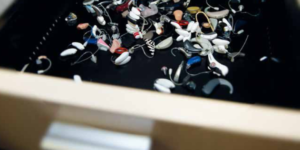 In a recent study, half of hearing aid users said that their hearing aids improved their relationships, and one-third of the respondents even saw improvements in their romantic lives. Whatever your reason may be for not using your hearing aids, the truth is that you’re missing the chance to fully connect. Whether it’s details on the big project in the office, the latest gossip in a classroom hallway, or a heartfelt moment with your significant other, hearing is a critical part of your daily life.
In a recent study, half of hearing aid users said that their hearing aids improved their relationships, and one-third of the respondents even saw improvements in their romantic lives. Whatever your reason may be for not using your hearing aids, the truth is that you’re missing the chance to fully connect. Whether it’s details on the big project in the office, the latest gossip in a classroom hallway, or a heartfelt moment with your significant other, hearing is a critical part of your daily life.
Unlike eyeglasses, which can produce instant results, it takes time to adjust to hearing aids. Remember, your brain is being asked to process sounds it hasn’t heard in a long time – or ever. Be patient and give yourself at least six to eight weeks to acclimate.
For most people, the primary obstacle to wearing hearing aids seems to be the stigma of age. Age-related hearing loss is an increasingly important public health problem affecting approximately 40% of 55–74-year old’s. The primary clinical management intervention for people with hearing loss is hearing aids. However, the majority (80%) of adults aged 55–74 years who would benefit from a hearing aid, do not use them.
Older people with hearing loss, often end up being isolated from friends and family. Because they can’t follow conversations and communicate well, they turn down invitations to gather in social settings. Hearing loss can also lead to higher levels of depression in the elderly.
Find a good audiologist to make sure that your hearing aids are comfortable, and meet your specific needs. In a recent study by Consumer Reports, two-thirds of hearing aids provided to customers were not fit well. Properly fitted hearing instruments need to not only be the right size, but also calibrated and amplified for your specific needs. If your first fit isn’t right, make another appointment with your hearing care specialist. Your fitter is as interested as you are in making sure you find hearing success.
Research often shows that clients feel “awkward” wearing hearing aids. With so much new technology in design of hearing aids, that just isn’t a good reason any longer to not wear hearing devices. In today’s world, there are earpieces and personal electronic accessories galore. With the advent of Bluetooth wireless headsets, more and more people are walking around with something in their ears. The net result is that others may not even notice the hair-thin tubing of your hearing aid.
Another reason hearing aids end up in a drawer is because many users feel like they just don’t work well and require too much fuss. Features like adaptive directional microphones and feedback suppression can make a tremendous difference in hearing results. Directional microphones are useful in noisy environments. They tend to pick up speech or the primary source of interest and reduce competing sounds, making conversation much easier. Today’s hearing aids also include automatic feedback suppression, which greatly reduces the chances of high-pitched feedback or whistling.
Advanced Hearing Group can Help!
Finding the right hearing solution depends on many important variables, beginning with your audiologist. Work with an expert who determines your lifestyle and listening needs, and then matches the technology to meet those needs. Once you’ve found that hearing care partner and have selected your technology, establish a schedule of follow-up visits to make sure that your devices are addressing your needs, and that you have a successful fit.
Ready to get back into life at full volume? The first thing to do is be honest about why you’re not wearing your hearing aids. Then, come up with a realistic solution, set goals, and reward yourself for reaching them. Who knows? The sounds you recapture may very well become rewards in themselves!

